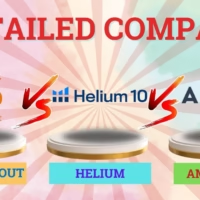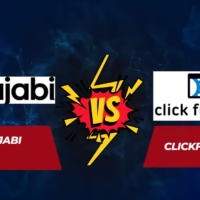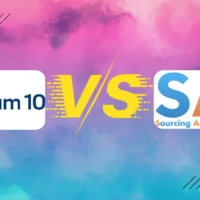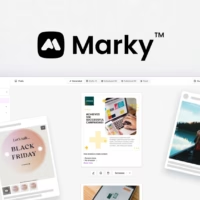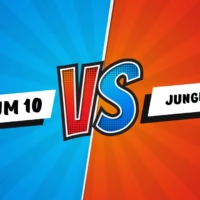Learn the most effective email marketing campaign strategy to boost conversions, engage your audience, and achieve your business goals.
Table of Contents
What Is the Most Effective Email Marketing Campaign Strategy?
Email marketing is one of the most powerful tools in a marketer’s toolkit, offering unparalleled ROI and direct access to your audience’s inbox. However, creating an effective email marketing campaign strategy requires careful planning, execution, and optimization. This guide will walk you through the key steps to build a winning strategy, highlighting the best tools available—GetResponse and Mailchimp that offer free trials to help you get started.
Why Email Marketing Matters
Email marketing continues to be a cornerstone of digital marketing due to its cost-effectiveness and ability to deliver personalized content. According to industry studies:
- Email marketing generates an average ROI of $42 for every $1 spent.
- Over 4 billion people worldwide use email daily, making it an invaluable channel for communication.
With these statistics in mind, implementing the right strategy can significantly impact your business’s success.
The Foundations of an Effective Email Marketing Campaign Strategy
1. Define Clear Objectives
Before crafting emails, establish your goals. Common objectives include:
- Increasing sales and revenue.
- Building brand awareness.
- Generating leads.
- Nurturing existing customers.
Your objectives will shape the content, tone, and format of your campaigns.
2. Know Your Audience
Segmenting your audience ensures you send tailored messages that resonate. Use these factors for segmentation:
- Demographics (age, gender, location).
- Behavioral data (purchase history, browsing habits).
- Engagement level (active vs. inactive subscribers).
Both GetResponse and Mailchimp offer advanced segmentation features to streamline this process.
3. Build a Quality Email List
Focus on organic list building rather than purchasing email lists, which can harm your deliverability. Proven methods for growing your list include:
- Offering lead magnets (eBooks, discounts, or exclusive content).
- Embedding signup forms on your website.
- Running social media campaigns with email opt-ins.
Crafting the Perfect Email
Key Elements of a High-Performing Email
- Compelling Subject Line Your subject line is the gateway to your email. It should be concise, intriguing, and personalized. For example:
- “[First Name], Unlock Your Exclusive Discount!”
- “Don’t Miss Out: Your Limited-Time Offer Ends Soon.”
- Engaging Email Copy Ensure your message is:
- Clear and easy to read.
- Aligned with your audience’s pain points.
- Actionable, with a strong call-to-action (CTA).
- Eye-Catching Design Visual appeal matters. Use:
- Mobile-responsive templates.
- High-quality images.
- Consistent branding.
GetResponse and Mailchimp provide pre-designed templates that can be customized to match your brand.
- Call-to-Action (CTA) Every email should have a clear purpose. Guide your audience by using actionable CTAs such as:
- “Shop Now.”
- “Download Your Free Guide.”
- “Sign Up for the Webinar.”
Advanced Email Marketing Strategies
1. Automation
Automated emails save time while ensuring timely communication. Popular automated email sequences include:
- Welcome Series: Introduce new subscribers to your brand.
- Cart Abandonment Emails: Encourage users to complete their purchase.
- Re-engagement Campaigns: Win back inactive subscribers.
Both GetResponse and Mailchimp excel in automation, offering tools to set up workflows effortlessly.
2. A/B Testing
Experimentation is key to improvement. Test different elements such as:
- Subject lines.
- Email designs.
- CTAs.
Track performance metrics like open rates, click-through rates, and conversions to determine what works best.
3. Personalization
Use subscriber data to create personalized experiences. For instance:
- Address recipients by their first name.
- Recommend products based on past purchases.
- Send birthday or anniversary emails with special offers.
Tracking and Optimizing Your Campaigns
Key Metrics to Monitor
- Open Rate: Measures the percentage of recipients who open your email.
- Click-Through Rate (CTR): Tracks how many clicked on a link or CTA.
- Conversion Rate: The number of recipients who completed a desired action.
- Bounce Rate: The percentage of emails not delivered.
Tools for Analysis
Both GetResponse and Mailchimp offer robust analytics dashboards to help you monitor these metrics in real-time.
Pros and Cons of Using Email Marketing Tools
| Feature | GetResponse | Mailchimp |
|---|---|---|
| Ease of Use | Intuitive interface, ideal for beginners and advanced users. | User-friendly, especially for small businesses. |
| Templates | Extensive library of professional templates. | Wide variety of customizable templates. |
| Automation | Advanced automation workflows with detailed triggers. | Strong automation features, suitable for beginners. |
| Free Trial | Yes, free trial available. Sign up here. | Yes, free trial available. Sign up here. |
| Analytics | In-depth analytics and A/B testing capabilities. | Comprehensive reporting tools with detailed insights. |
| Price | Affordable plans for businesses of all sizes. | Free plan available; scalable paid options. |
Conclusion
The most effective email marketing campaign strategy combines a deep understanding of your audience, compelling content, and smart use of tools like GetResponse and Mailchimp. By defining clear objectives, segmenting your audience, and leveraging automation, you can achieve higher engagement and drive meaningful results.
Ready to start building impactful campaigns? Both GetResponse and Mailchimp offer free trials, allowing you to explore their features risk-free. Choose the one that aligns best with your needs and take your email marketing to the next level.


